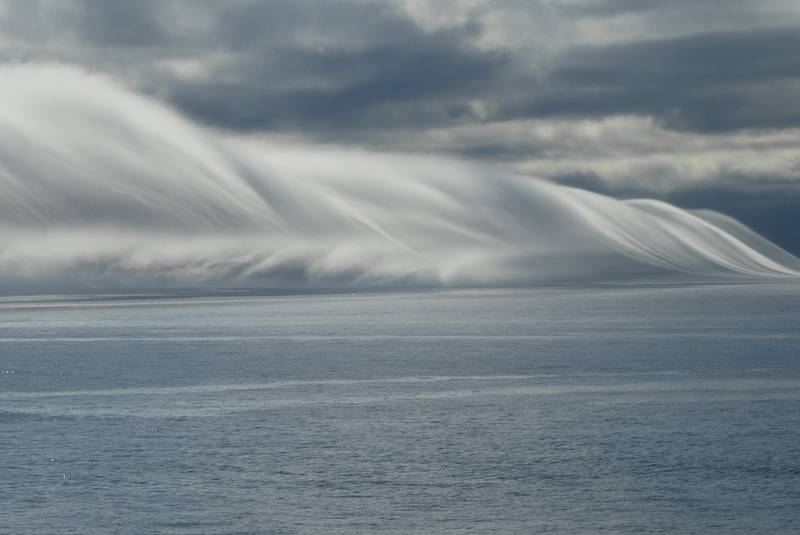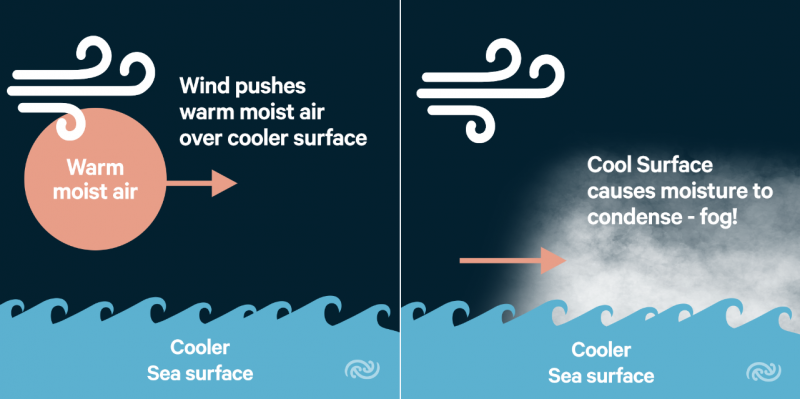

The dissipation of Radiation Fog can take place through the following mechanisms:

In the winter, however, under stationary synoptic situations Radiation Fog or lifted Fog (Stratus) can last for days. For example in summer, Fog layers are most often thin due to short nights. Depending on the season and synoptic conditions the Radiation Fog may or may not develop into a mature Fog. Secondly, even if the temperature of dry and moist regimes is equal, the moist boundary layer would still appear warmer in IR imagery due to the radiation from water vapour which is detected at these wavelengths.Īs the Fog gets thicker, it becomes more uniform in the vertical, with a well-defined top. Firstly, in a moist air mass the ground cools slower than in a dry regime. Better temporal, but poorer spatial resolution of geostationary satellites reduces their capability to show the initial stages of Radiation Fog.Įnhanced IR data can in some cases be used for the detection of moist boundary layers and, hence, for forecasting the probable locations for Radiation Fog a few hours in advance. The poor temporal resolution of polar satellite imagery greatly restricts the usefulness of this method. In cases where there is enough sunlight, very thin Fog may be distinguished with NOAA 124 images, thin Fog layers being very deep yellow, even brownish in colour (see Cloud structure in satellite image). The formation phase of Radiation Fog may be very hard to follow in satellite images, as the development often takes place at night, when visible satellite images are not usable. As soon as the deepening Fog layer becomes optically thick (some tens of metres), the upper part of it becomes the effective interface to space. As radiative cooling continues, excess water vapour begins to condense into Fog droplets. The cooling of the air near the ground makes it increasingly thermally stable, which weakens and eventually stops turbulence above ground. Radiation Fog forms, when the ground cools rapidly after sunset by longwave radiation to space.

The typical vertical distribution of temperature, dew point temperature and wind are presented in the front panels. Advection Fog is also frequently observed in wintertime low pressure warm sector areas over the continents.ĭiagram showing the synoptic conditions for night-time Radiation Fog (left) and Advection St/fog (right) with front and side view panels. Moist and warm southwesterly or southerly air streams over cool waters such as over cold ocean currents can create very extensive Fog sheets. As an average moderate (4-7 m/s) surface winds are typical for Advection Fog occurrences. Depending on the wind speed and fetch over water the interaction between the cooler surface layer and the overlying air results in low-level Stratus cloudiness and even Fog. Too strong wind will most likely create Stratocumulus than Stratus.įor the Advection Fog the important factors are the advection of moisture and temperature by the wind. Wetness of soil significantly increases the chances of Radiation Fog, for which reason a very favoured situation for Fog formation is the sky clearing and wind decreasing in the evening after a rainy day. Preferred locations to fullfill these conditions can be found adjacent to high pressures over land (mostly during the winter season) with associated weak pressure gradient. Radiation Fog formation typically calls for clear skies, ample moisture in the surface layer and light winds. Otherwise the conditions differ greatly for these Fog types. The necessary condition for both the advection and radiation St/fog formation is a sufficient moisture content in the lowest layers of the atmosphere. By the mixing of two parcels of slightly unsaturated air initially having different temperatures.By ascent and resultant cooling of an air parcel.This condensation can be produced in the atmosphere by three mechanisms: This chapter mainly focuses on advection Stratus/fog and Radiation Fog.įog (or low Stratus) is formed, when moist air near ground level starts to condensate. The only real difference between Fog and Stratus is the different altitude of the cloud base, which for Stratus lies a few hundred meters above ground, whereas in Fog the cloud base descends to ground level. The reason why these two phenomena are discussed together is the fact that for satellite sensors viewing them from above the differentiation is very difficult, at least with current techniques.

The definition of each has been formulated as follows: Stratus and Fog are phenomena that are easy to differentiate for a human observer at ground level. FOG AND STRATUS - METEOROLOGICAL PHYSICAL BACKGROUND


 0 kommentar(er)
0 kommentar(er)
